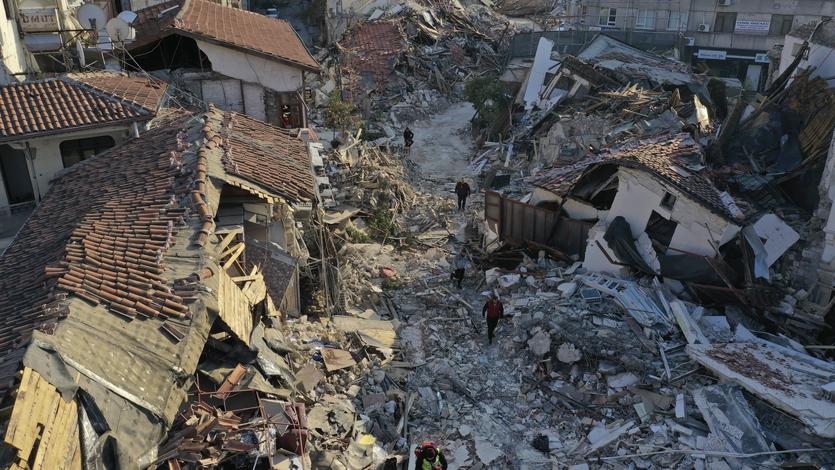 People walk among destroyed building in the old city of Antakya, southern Türkiye, Feb 13, 2023. (PHOTO / AP)
People walk among destroyed building in the old city of Antakya, southern Türkiye, Feb 13, 2023. (PHOTO / AP)
BEIJING - China has deployed several satellites to capture images of the quake-hit areas in Türkiye, helping the country to analyze the disaster situation and allocate relief resources more effectively, according to the industry newspaper China Space News.
Using synthetic aperture radar images provided by China's L-SAR 01, researchers accurately portrayed the extent of the damage caused by the earthquakes and provided important data support for post-earthquake rescue efforts in Türkiye, said the newspaper.
China's L-SAR 01 is a satellite group composed of two satellites equipped with L-band SAR, namely the L-SAR 01A and the L-SAR 01B. Both satellites were launched last year, and were tasked with providing data to support land resource management, mapping, forestry, and disaster prevention and relief.
Following the twin earthquakes that rocked Türkiye and Syria on Feb 6, Chinese researchers acquired post-earthquake SAR images from L-SAR 01 on Feb 10. After differential interference processing with the pre-earthquake SAR images, they obtained the isoseismic deformation field of the two strong earthquakes, China Space News noted
"SAR" refers to a microwave-imaging radar system that emits electromagnetic waves to Earth and receives echoes. It can take high-definition microwave pictures of the land surface.
ALSO READ: China's rescue team returns after successful Türkiye mission
Following the twin earthquakes that rocked Türkiye and Syria on Feb 6, Chinese researchers acquired post-earthquake SAR images from L-SAR 01 on Feb 10. After differential interference processing with the pre-earthquake SAR images, they obtained the isoseismic deformation field of the two strong earthquakes, the newspaper noted.
Moreover, after the massive earthquakes, satellite images taken by China's Gaojing-1 04 satellite on Feb 8 showed that a fire broke out in Iskenderun port in southern Türkiye and that some of the port's containers collapsed, according to the newspaper.
"The satellite images helped people analyze the situation in quake-affected areas and carry out rescue work," it said.
READ MORE: 5 pulled from rubble in Türkiye, some aid reaches Syria
The newspaper also pointed out in its microblog that more than 10 civil and commercial satellites, including Gaofen-1 02/03, Gaofen-2, and Gaofen-3 01/03 were deployed to capture images of the quake-hit areas in Türkiye.
By Feb 10, a total of 67 remote sensing images were obtained, including 34 optical images and 33 SAR images, it added.


